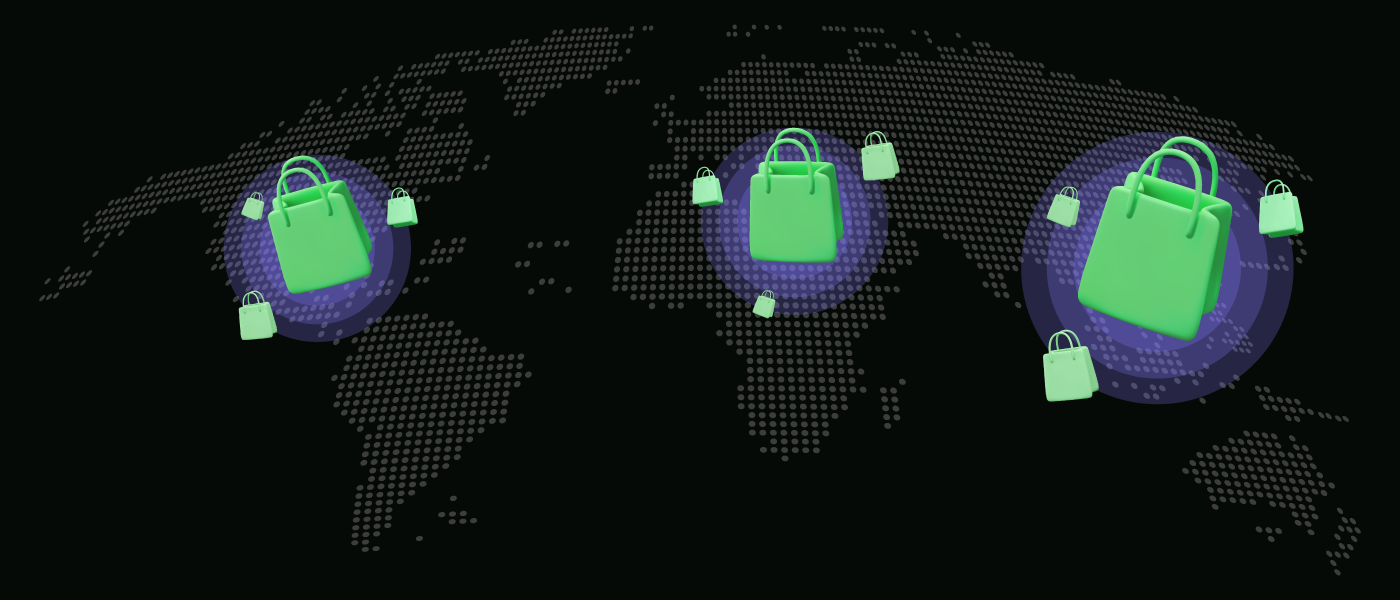What is Multi-Channel E-commerce?
As the name suggests, multi channel e-commerce refers to selling goods and services through multiple channels. It includes social media platforms, websites, mobile applications, and sometimes even IoT. It enables business owners to diversify their horizons instead of relying on a single sales channel.
In today’s age of digitization, shopping online has become the new normal. Online shoppers expect the same convenience and experience as other physical stores. Therefore, to keep up with these expectations, business owners must provide a shopping experience wherein customers can easily find and purchase goods without too much hassle.
Research shows that as much as 73% of consumers explore various platforms before finalizing their purchase decisions. Offering products on multiple sales channels helps satisfy the target audience and bears several other benefits. It enhances the customer experience, becomes an excellent source of increased revenue, and expands your brand awareness.
Benefits of Multi-Channel E-Commerce
Now that you have a better understanding of what is multi channel e-commerce, let’s take a look at some of the many benefits it extends!
Increased Reach and Awareness
Opting for multiple sales channels serve as a point of excellent exposure since it puts forward your brand to a broader range of customers worldwide. This increases your brand visibility manifold, organically driving more customers to your business.
One of the best examples of the same includes using social media. A social media presence enables you to interact directly with your customers, which is crucial in maintaining a strong long-term relationship.
Improved Sales Performance
According to a recent study, DTC brands with more than three sales channels typically witness a 287% higher purchase rate than those with only one sales channel.
Enabling multiple sales channels helps to create an optimum purchase experience for your customers. They no longer have to visit a store in-person or create a new account on your website to buy their chosen product. Instead, they can simply purchase directly from the channel they are on.
Furthermore, multi channel e-commerce is also an excellent way to reduce cart abandonment since customers can successfully make their purchases in just a few clicks.
Enhanced Customer Experience
Another fantastic benefit of e-commerce multi channel is that it leads to an enhanced customer experience. Wondering how? Being available across various platforms sends the message that you value your customers and their needs and demands. This also helps create a unique identity in a competitive marketplace. Furthermore, by providing convenience to your audience, you enhance the customer experience, which leads to trigger repurchases and helps build strong brand loyalty.
Better Targeting Strategies
Last but not least, by being available on multiple platforms, you get access to tons of valuable data and information, which includes sales history, locations, and demographics of your customers, among others. You can further use this information to set the desired targeting strategies or to analyze other important aspects of your business, like inventory turnover and sales velocity.
Top Solutions for Multi-channel E-commerce
While e-commerce multi channel can be extremely rewarding for a business, it can get confusing if you do not prepare beforehand. Things can get complicated, from managing your product listings to ensuring sufficient inventory to meet demands.
To help you with the same, here are some of the best solutions in the market for multi channel e-commerce.
Multi channel e-commerce inventory management
Enabling e-commerce multi channel software helps to integrate all your inventory, sales channel, and fulfillment center into one dashboard. However, while doing so, it is important to ensure that the software is fully equipped with the necessary technology to automate complex tasks such as pulling inventory reports, generating insights for inventory forecasting, and other such things of similar nature.
A few inventory management tools also possess the ability to provide catalog management and SKU management features, which you can use to manage all your listings across varied channels. Zentail, Skubana, Linnworks, and Brightpearl are a few widely used multichannel inventory management examples.
Fulfillment and shipping
Multi-channel fulfillment is an important factor to consider when dealing with multi channel e-commerce. It enables you to align all your sales channels to the same fulfillment software. This, in turn, helps to ensure that all your orders are processed properly and delivered to the closest fulfillment center, from where they will be sent to the customers in the most affordable and last-mile delivery route.
Returns management
Returns management usually involves a lot of different complex tasks such as issuing refunds, restocking the returned items, and documenting the return reasons, among others. Therefore, implementing a system that will help track and manage all these processes is crucial for every business since it helps to save a lot of time and money.
Returnly and Happy Returns are two solutions that can be used in return management.
Optimizing Multichannel E-commerce Operations
Every business must optimize its presence across each retail channel in this highly dynamic marketplace. After all, multi-channel e-commerce is the key to generating more positive business growth.
Having said that, it is true that optimizing across a wide range of channels can seem like a daunting task at first. Nonetheless, every small yet efficient change you make will have a much bigger impact than you can imagine.
Maximizing Revenue
Flat or declining sales across any particular channel can indicate that it is stalling, and there might not be as many opportunities for future growth as compared to other channels. However, before you opt out of the channel, here are a few ways to optimize your presence.
- Diversification of channel mix
Diversifying your channel mix can enable you to widen your customer base and lower the chances of revenue cannibalization between channels. While doing so, it is also important to allocate a specific role to each channel and evaluate how they affect the overall strategy.
- Product Portfolio
Conducting frequent product portfolio tests will help you drive new best sellers. In most businesses, only a handful of products make up most of the revenue. In such cases, it is always recommended to expand the top-performing products so that you do not have to rely on limited lines anymore.
Protecting Profit Margin
Evaluating the profitability margin is also a great way to assess the overall health of a channel. Although factors such as discounts, returns, and advertising can cause a dent in the margins, following a layered approach will help to maximize your profit.
- Categorize products by pricing and margin level
- Design a portfolio strategy based on certain channels utilizing product groups
- Analyse all the costs and fees related to the selling destinations.
Promoting a Strong Brand Image
A strong brand image is one of the best ways to maximize sales. However, it is not just limited to your business’s mission or vision statements. It comprises a wide range of aspects, including the kind of emotions you provoke in a customer’s mind. To create a long-lasting relationship with your customers, you need to closely monitor and rectify things such as-
- Negative reviews
- Vague descriptions
- Out-of-stock/unavailable messages and
- Deeply discounted prices, among others.
Managing Strains on Internal Resources
The more channels you use for your business, the more resources you need to hire to maintain each of them. This can not only cause a financial strain but might also complex all your business processes. In order to avoid such a situation, it is always recommended to use a centralized e-commerce platform that will automate most of these tasks, so you and your team can focus on other important tasks, such as updating your D2C website or monitoring out-of-stock products.
Strengthening Retail Channel Performance
Retail channels can sometimes be extremely difficult to manage. However, there are a few ways you can improve retailer performance. Wondering what those are?
Pricing and Promotions
Identify any pricing mistakes that might arise and rectify them accordingly. It is also important to thoroughly analyze the price-matching dynamics and synchronize all promotions across every channel.
Positioning
Evaluate how different keywords in your title and description impact the overall search position of your business on the digital shelf.
Content and Reviews
Maintain your product page with up-to-date assets and follow back with corrective actions whenever customers leave bad reviews.
Common Multi-Channel E-commerce Platforms
Below are some of the best multi channel e-commerce platforms used by most brands worldwide.
Google Shopping Ads
Google Shopping is one of the most effective ways to attract online shoppers directly from the search result pages. It allows you to list your products under the Shopping section. Therefore, when online shoppers search for a similar item, the relevant products will immediately appear on the screen for shoppers to browse and buy. What’s more? You will only have to pay when a buyer clicks on your product.
Online Marketplaces (e.g., Amazon, eBay)
Amazon and eBay are two fantastic examples of online marketplaces that make your brand visible to millions of consumers worldwide. You can share almost everything and anything on these platforms, from electronics to clothing items.
However, there is one downside to it. The more popularity you gain, the more competition you will have to face. Therefore, sustaining yourself in such a fast-growing marketplace can be difficult if you do not implement an efficient marketing strategy.
Brick and Mortar Stores
Brick-and-mortar stores are the forerunner of traditional retail. It enables businesses to forward their products or services to shoppers and connect with them face-to-face. Researchers indicate that almost 49% of buyers prefer buying goods from brick-and-mortar stores over online platforms.
Website/Online Shopping Cart System
E-commerce websites offer an effective way through which brands sell products directly to customers without the need for intermediaries such as wholesalers or third-party retailers. Although these can be a great source of revenue for most businesses, maintaining the same can cause a financial crunch for many.
Speed and functionality are two of the most important ingredients to run a successful website. In fact, according to the latest study, a one-second delay in page load speed can cost you as much as a 7% reduction in conversion rates.
Instagram Shopping
With Instagram boasting a whopping 2 billion monthly active users, the platform can be an excellent sales channel for businesses. Instagram Shopping is one of this platform’s many features for retailers to integrate product catalogs with their pages.
In this way, the users can make their purchases directly on this platform without switching to other sites. The only downside is that since the purchase is made within the application, it retains authority over the customer data.
Facebook Shop
Facebook is yet another social media application that enables users to browse various products and make purchases quite easily without leaving the platform- all thanks to Facebook Shop and Marketplace.
Furthermore, it also widens your reach to hundreds and thousands of users worldwide. However, to avail of these benefits, there is a strict list of requirements that every seller needs to oblige to before they can start selling their products on this platform.
Implementing a Multichannel Strategy
Below are some of the most important steps a business owner must follow while implementing a multichannel strategy.
Identify Your Target Audience
Identifying the target audience is important since it helps marketers decide on the channels they should focus on and also sets the tonality of the messaging. You can utilize various tools, such as Google Analytics, to obtain relevant details about the demographics of your customers and their interests. This, in turn, will enable you to create unique custom buyer personas for your business.
Develop a Consistent Brand Image Across All Channels
One of the most important factors to consider when dealing with multichannel marketing is to create a cohesive experience across all channels. This is paramount for every business since your consumers will get easily confused when switching from one channel to another. Furthermore, your content must be relevant and follow a consumer-first approach.
Personalize the Customer Experience
Researchers indicate that as much as 71% of customers expect brands to deliver personalized interactions. You can derive several benefits from incorporating personalized customer interactions, such as an increase in sales and customer loyalty, among others. While giving you an edge over others, it also sets you apart from the competition, which is crucial to stay relevant in the highly competitive market.
Monitor and Optimize Your Marketing Strategies
Lastly, you need to evaluate the performance of your multichannel marketing strategies. To achieve the same, you can harness the power of several metrics, such as impressions, shares, or page views. This will help you monitor and track the effectiveness of all your marketing strategies while enabling you to rectify any potential vulnerabilities towards better performance.
Challenges of Utilizing Multiple Channels
While the benefits of implementing multiple channels in your business are huge, there can be a few downsides to it as well. After all, nothing good ever comes easy!
The following list highlights some of the most common challenges of utilizing multiple channels.
Balancing Offline vs. Online Presence
One of the biggest challenges faced by most businesses that implement this approach is the coordination of efficient exchange of data between the varied channels. Customers always expect a high level of service, irrespective of which channel they use. This means that to make your business successful, you need to maintain a steady balance between both your offline and online presence. For example, if you provide professional guidance to your customers at a physical fashion store, you need to generate the same positive experience online as well.
Overlapping Customers Across Multiple Channels
Another common challenge faced by most businesses is overlapping customers across multiple channels. This especially occurs when you use different teams or third-party providers to manage the communication flow with your customers across varied channels. It ultimately results in customers receiving messages that can quite easily overlap each other with redundant, irrelevant information.
Managing Inventory Across Different Platforms
Inventory management can also be highly complex, especially for small to medium-sized businesses adopting the multichannel strategy. It can become quite difficult to keep track of inventory across multiple channels, ultimately resulting in loss of customers or understocking.
Why Multi-channel E-commerce is Growing
It is true that adopting a multi-channel e-commerce approach can quite easily make your whole business complex and difficult to manage. However, the various benefits that it brings to the table outweigh all of its disadvantages. On that note, here are a few reasons why multi-channel e-commerce continues to grow, even today.
Increases brand visibility
Enabling multichannel e-commerce increases your brand visibility. But how? The more your customers see your brand on new platforms, the more familiar they will be with you. Typically it takes a lot of interactions with customers before they will finally make a purchase from your brand. Multichannel e-commerce makes this process quite simple. Furthermore, it also acts as social proof.
One example is when you use social media, you can connect with a huge base of customers and encourage them to share your brand’s content with their networks.
Helps meet customer expectations
One of the most significant reasons multichannel e-commerce is booming is that it helps meet customer expectations. The data you gather from these different channels can be analyzed to understand the needs and demands of your target market. Following this, you can take the necessary steps to meet those demands, thus fulfilling all their expectations. Once your customers start feeling valued, it will automatically provoke a sense of loyalty in their minds.
Increases sales potential
Cart abandonment is one of the most pressing challenges of the digital world. One excellent way to reduce the chances of the same is by enabling multichannel e-commerce. By allowing your customers to make direct purchases from different platforms, you provide them with flexibility and convenience. Thus, they no longer have to switch to a different platform or create a new account on a new site to buy a product.
Conclusion
Implementing a multichannel strategy for your online business can bring many benefits to the table. All the different processes involved can seem a little overwhelming initially, but the outcome is definitely worth it. From seamless order fulfillment to a larger audience base and significant revenue growth, the list is endless.
FAQs
What do you mean by multi-channels?
Multi-channel refers to using different channels for dishing out marketing messages. This includes email, television, display ads, and social media, among others.
What is multichannel vs omnichannel e-commerce?
Multichannel, as the name suggests itself, refers to the distribution of goods across multiple channels. These channels are usually not integrated. Contrary to this, omnichannel e-commerce refers to using multiple channels to interact with customers. However, in this case, all the different channels are integrated to create a seamless customer experience.
Is multi-channel e-commerce more profitable?
Yes, multi-channel e-commerce tends to be more profitable when compared to traditional single-channel e-commerce. This is because the former model allows brands to display their products and services to a broader range of customers, ultimately leading to better brand visibility and increased sales.
What is the difference between cross-channel and multichannel?
One of the main points of differentiation between both these models is how they interact with their customers. Although both cross-channel and multi-channel involve different channels to interact with customers, the former is usually more interactive and follows the specific objective of always putting the customer first.
What is an example of multi-channel communication?
Multichannel communication refers to connecting with potential customers through different channels. For example, when a business tries to interact with its consumers, through web portals, SMS, and mobile applications, among others.











